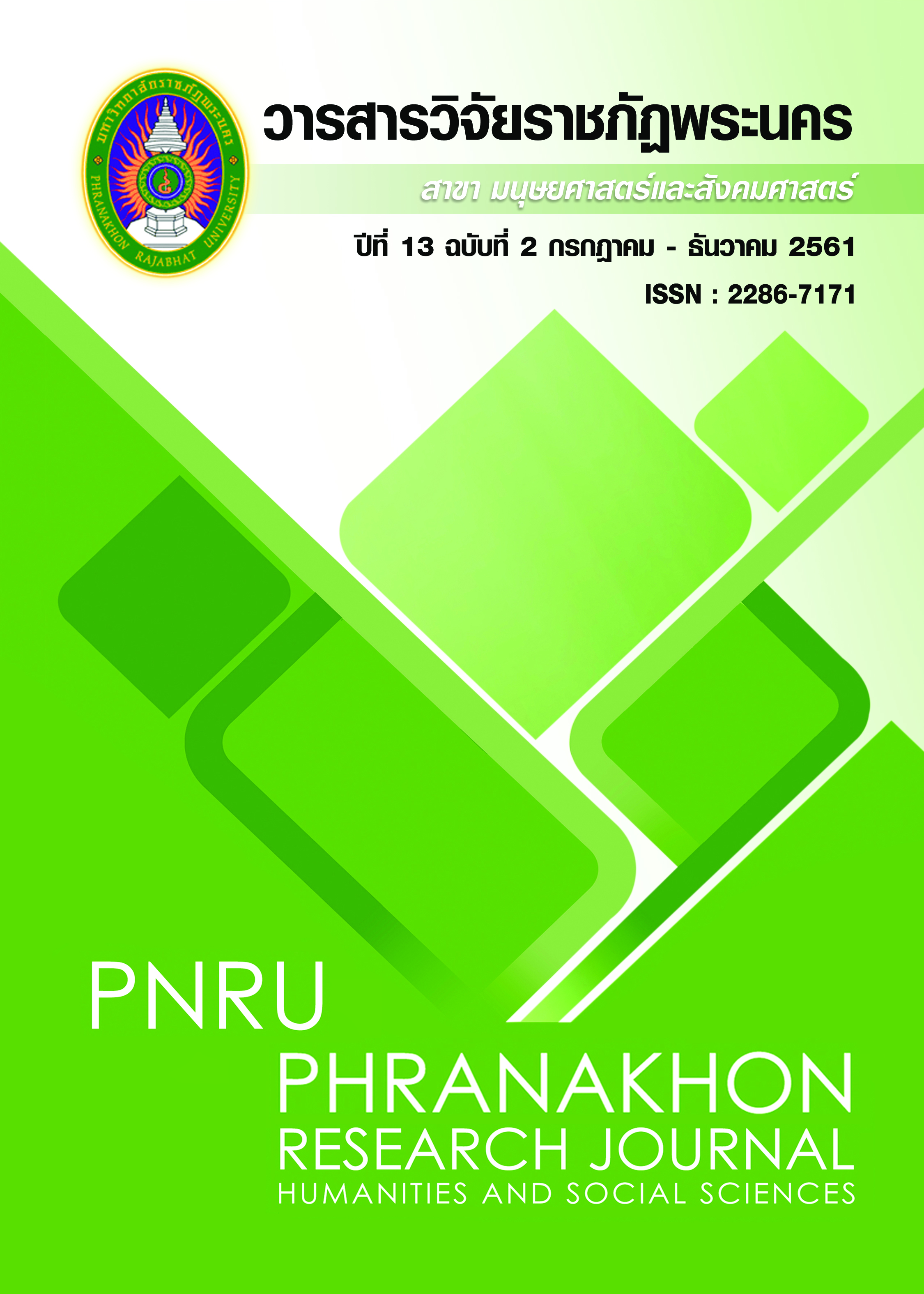MATHEMATICAL LEARNING MANAGEMENT ENHANCING CREATIVE PROBLEM-SOLVING ABILITY OF LOWER SECONDARY SCHOOL STUDENTS
Main Article Content
Abstract
The purposes of research were to (1) examine their learning outcomes by implementing the lesson plans, and (2) explore their opinions towards the implementation of the lesson plans. The sample was a group of 27 lower secondary school students who were mathematics club members, in 2017 academic year, in Pakkret School, Pakkret District, Nonthaburi Province. The research instruments were the lesson plans aiming to enhance creative problem-solving ability, a test of creative problem-solving ability, and a questionnaire concerning students’ opinions about the implementation of the lesson plans. The statistics used for data analysis were percentage, mean, standard deviation and t-test. The construction of the lesson plans aiming to enhance creative problem-solving ability, the researchers employed an approach highlighting an elicitation of different solving problem possibilities. The approach possessed two characteristics:(1) following 3 stages: presentation, practice, and production; and (2) featuring group-work problem-based learning.
The findings were as follows: 1. As for the students’ learning outcome after the implementation of the lesson plans constructed on purpose to enhance creative problem-solving ability, it revealed as follows: (1.1) The mean score of the test measuring creative problem-solving ability was 20.37 out of 30 and its standard deviation was 3.44, accounting for 67.90 percent. (1.2) There were 22 students, accounting for 81.48 percent, whose scores of the test measuring creative problem-solving ability were greater than 60 percent. (1.3) The comparison between the students’ mean score and the criterion, which justified the minimum passing scores of 60 percent, showed that the former was higher than the latter, at the significance level of 0.05. 2. The students had a high opinion in the overall about the implementation of the lesson plans. Likewise, they expressed a high opinion on every aspect.
Article Details
Each publish articles were copyright by Phranakorn Rajabhat University
Any contents which appeared in each articles in the journal were authors personal opinion. It did not relate to Phranakorn Rajabhat University and other instructors in the university. Each authors would take responsibility on their articles. If there are any mistake, the authors will take responsibility themselves
References
Elshafei, D. L. (1998). A comparison of problem - based and traditional learning in algebra II. Dissertation Abstracts. Retrieved April 20, 2009, from www.thailis.uni.net.th/dao/detail.nsp. html
Gijselears, W. H. (1996). Connecting problem-based practices with educational theory. In L. Wilkerson & W.H. Gijselears (eds.). Bringing Problem – Based Learning to Higher Education: Theory and Practice. San Francisco: Jossey – Bass.
Kamanee, T. (2007). Science of teaching. 6th edition. Bangkok: Chulalongkorn University printing press. (in Thai)
National Institute of Educational Testing Service: NIETS (Public Organization). (2016). The statistic of ONET score from Grade 9 & 12 in the Academic Year 2014-2016.
Retrieved September 13, 2017, from https://www.niets.or.th/uploadfile /5/371f1b3becb7870d1eb40e3d46ef0ac.pdf. (in Thai)
Office of the Education Council. (2007). Problem-based learning management. Bangkok: Office of the Education Council, Ministry of Education, (in Thai)
Pimwan, M. (2006). The instructional package using problem-based learning on the surface areas at Mathayomsuksa III. Master Thesis, Graduate School Srinakharinwirot University, Bangkok. (in Thai)
Thongsugnok, R. (2004). The instructional package using problem-based learning on the number theory at Mathayomsuksa IV. Master Thesis. Graduate School Srinakharinwirot University, Bangkok. (in Thai)

